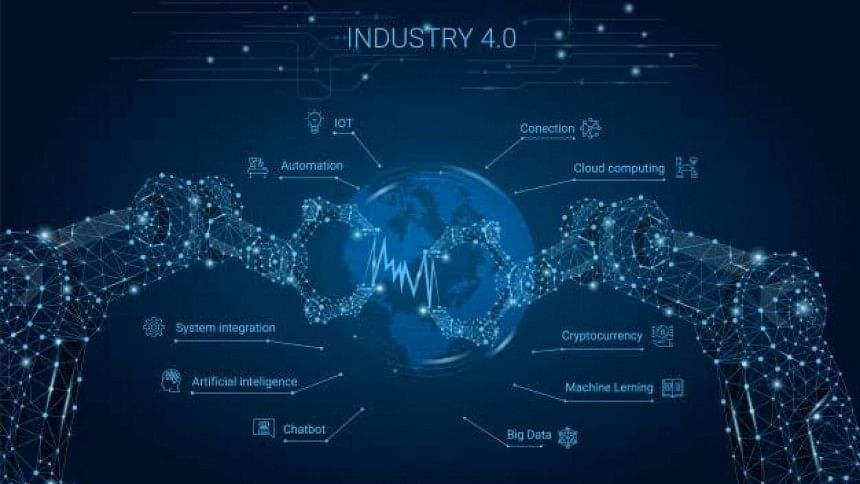Policies to protect privacy and data

The first industrial revolution was triggered by the steam engine, whereas the second and third ones were driven by mass production and the microprocessor, respectively. Each of these revolutions brought about massive transformation in the economy by upending the prevailing production, distribution and consumption systems of that time and in society by revoking and redefining many rules and norms once taken for granted.
Today we are witnessing another remarkable inflection point in the history of humankind that was first coined by Professor Klaus Schwab, founder of the World Economic Forum, as the fourth industrial revolution, which is being shaped by the confluence of physical, digital and biological worlds. This is fundamentally disrupting the way we live, work and connect each other.
Although the fourth industrial revolution is flourishing upon the previous three, it is distinct in terms of scope, size, scale, speed, complexity and intensity.
The major drivers of the fourth industrial revolution are several frontier technologies, such as artificial intelligence, big data, internet of things, quantum computing, 3D printing, renewable energy and biotechnology, to name a few. According to a study by McKinney Global Institute, big data alone has the potential to create an additional USD 3 trillion worth of value in only seven industries. Big Data is not only a distinct domain, but it also provides the basis for many other branches like AI, deep learning, natural language processing, bioinformatics and so on. For instance, an autonomous vehicle can be put into practice only with enough learning through variety and volume of representative data.
Big Data is often described in terms of 5Vs: volume, velocity, variety, veracity and value. According to IBM, "Every day, we create 2.5 quintillionbytes of data—so much that 90 percent of the data in the world today has been created in the last two years." Such a big volume of data comes from a plethora of different sources like hundreds of millions of interconnected sensors, smart devices and online transactions, and in a variety of formats, such as social media posts, photos and videos, meteorological records, health data, e‑commerce transactions and so on.
In this backdrop, it is no surprise that the volume of business data doubles every 1.2 years. Consequently, the data volume is so large, format is so diverse, and response time is expected to be so prompt, that the traditional computing tools, techniques and algorithms are often falling short to process them. As a result, new algorithms and techniques are being developed by the data scientists to discover interesting and insightful patterns and predict future events from the ocean of data leading us to a new paradigm of data-driven decision-making (DDDM). Like its predecessors, the fourth industrial revolution is either engulfing or redefining many previously successful business models as well as the jobs involved, while creating opportunities for new ones. One good example can be the ride‑sharing platforms like Uber or Didi globally and Pathao or Sohoj in Bangladesh. By and large, these are data-driven applications matching demand and supply data in real-time.
The big question is, who is going to succeed in this revolution? Unfortunately, the answer is not very straightforward and simple, but it can safely be assumed that those who will adapt to this new reality and adopt a data-driven approach in the decision-making process, will remain ahead of the others. Again, only those organisations will win, who will master designing, developing and applying quick, innovative and proficient analytics algorithms. Thus, it is no wonder that businesses are enthusiastically incorporating DDDM to bolster their competitive edges.
However, improving accuracy of the decision is only a part of the game that must be complemented with the process, which is scalable, interoperable, robust and capable of delivering concurrent, on-demand and impactful results. Benefits of this new paradigm include extracting useful insights and patterns hidden in raw data, applying new knowledges to boost performance, introducing novel approaches in the business processes, deep diving into complex agenda and exploring previously unconsidered problems.
The next question is whether big data has anything to offer for the public sector. As a matter of fact, many governments across the world are harnessing DDDM approaches in a variety of sectors to optimise resource allocation, framing impactful public policies and streamline business processes. Australia, like many other countries, has even established a whole new set of institutions like the Office of the National Data Commissioner, promulgated new legislations and revisited existing ones such as privacy act and formulated new policies like open data directives in order to cope with the age of incredibly fast and frequent data proliferation and motivate all concerned towards the sensible use of big data. The primary objective behind such reforms are to foster transparency and openness in government activities, augment reproducibility of science and technology and facilitate innovation by disclosing anonymous data in large volume and reusable format.
In his book, The Fourth Industrial Revolution, Professor Schwab defines the tipping point for big data as the replacement of census with big data sources that is predicted to take place by 2025. Ironically, as digital data is getting bigger and posing huge promise, concerns are also looming large regarding privacy of individuals and the security of sensitive information. We have already fallen victim to privacy breaches by some of the Internet's giants, that harvest sensitive and private data in the name of free services and use such data unethically. Cambridge Analytica's alleged meddling in the US presidential election in 2016 is a vivid example of irresponsible usage of big data.
Thus, privacy is under a greater threat now than ever before. In keeping with the emerging reality, our government is formulating a data policy, which is certainly a timely and praiseworthy move. As such, it is highly desirable that this policy will draw an appropriate, yet flexible, balance between data disclosure requirements and protection of data privacy and security.
Md Abdul Bari is a civil servant who is currently pursuing his Master's degree at the University of Queensland, Australia.

 For all latest news, follow The Daily Star's Google News channel.
For all latest news, follow The Daily Star's Google News channel. 








Comments